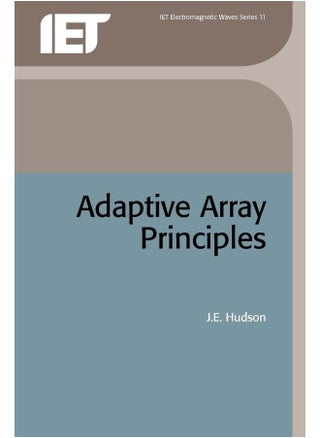Free & Easy Returns
Best Deals



| Publisher | Institution of Engineering and Technology |
| ISBN 10 | 0863412475 |
| Book Format | Paperback |
| Book Description | Adaptive arrays are a radical departure from conventional thinking in antenna design, offering substantial improvements in performance over fixed pattern antennas in environments that include severe interference and jamming. They achieve this because they are designed to steer nulls automatically at noise sources of unknown or variable direction and generally to modify their beampatterns to optimise performance. Adaptive array processing is applicable in most systems that exploit wave propagation; typical uses being radar, active and passive sonar, radio communication links, and radio monitoring.Although sensors and hardware for different applications vary, the same optimality criteria are used throughout and similar algorithms may be employed. This book develops the concepts underlying the design of adaptive arrays from first principles and is directed at research workers and designers whose mathematical background requires refurbishment in the special techniques that have accumulated around the field, often to the obscuration of the simple basic ideas.The topics treated include: single multiple null steering; derivation of the weighting coefficients in an array that maximises signal to noise ratio; online algorithms for achieving these coefficients using gradient methods based on correlators and coefficient peterbation; direct estimation of optimum coefficients by covariance matrix inversion and recursive techniques; prevention of null steering at the desired source and control over the main lobe shape; minimisation of the number of variable coefficients in suboptimal implementations. |
| Publication Date | 15 September 2003 |
| ISBN 13 | 9780863412479 |
| Author | J.E. Hudson |
| Language | English |
| About the Author | J.E. Hudson graduated from the University of Birmingham in 1964 and was awarded the Ph.D. degree in 1968 for research in spatial coherence of waves in inhomogeneous media and digital signal processing. He then worked at MSDS, Stanmore, on sonar systems and was a research fellow at Birmingham working on mutual coupling, pattern recognition and transducer design. He took up a post as lecturer at the Department of Electronic & Electrical Engineering, University of Loughborough, in 1972. Interest in adaptive array processing began in 1973 with the award to the department of an MOD contract to investigate passive sonar applications, and has continued with the field widening to include HF arrays, microwave communications and radar.Hudson has prepared a large number of research reports in the field and has published some of the more interesting results in the literature. Other interests include spectral analysis, parameter estimation, signal processing and general techniques applied to these and field problems. |
| Number of Pages | 268 pages |

